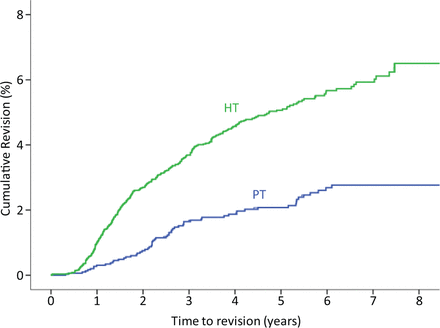This month’s issue of the American Journal of Sports Medicine included two studies comparing the revision rates of ACL reconstruction between hamstring grafts and patellar tendon grafts of over 25,000 people. The overall number of people studied between the two groups was really compelling to me as a sample size this big is certainly worth discussing.
In recent years the graft choice for ACL reconstruction has been slowly shifting towards favoring hamstring grafts rather than patellar tendon grafts. Recent reports have noted 84% of ACL reconstructions in Denmark and Sweden use hamstring grafts, 60% in Norway, and now are even becoming more popular in the US with 44% of ACL reconstructions using a hamstring graft compared to 42% using a patellar tendon graft.
Many research papers have been published showing that both grafts result in very good stability of the knee with excellent subjective outcome scores. The major complaint of patellar tendon grafts is the increased risk of issues after surgery, such as patellofemoral pain and loss of motion. Despite the reports of good stability and subjective outcomes, revision surgery is probably a more important factor to consider.
Do ACL Hamstring Grafts Fail More than Patellar Tendon Grafts?
The first study reviewed the nationwide Danish Knee Ligament Reconstruction Registry, which included 13,647 people undergoing ACL reconstruction between 2005 and 2011.
The revision rates for hamstring tendon grafts were 0.65% at 1 year after surgery, and 4.45% at 5 years after surgery. The revision rates for patellar tendon grafts were 0.16% at 1 year after surgery, and 3.03% at 5 years after surgery.
Essentially, hamstring grafts had a 4x greater risk of revision in year one and 1.5x at 5 years following ACL reconstruction.
The second study reviewed the nationwide Norwegian Cruciate Ligament Registry, which included 12,643 people undergoing ACL reconstruction between 2004 and 2012.
The revision rates for hamstring tendon grafts were 5.1% at 5 years after surgery, and 2.1% for patellar tendon grafts. This study also looked at different age groups and found this increased rate to be consistent across all age group.s However, the younger group (age 15-19) had a 9.5 revision rate at 5 years using the hamstring graft in comparison to 3.5% using a patellar tendon graft.
Together, there was a 2x greater risk of revision overall when using the hamstring graft, but closer to 3x greater risk for younger people.
Both Grafts are Great Options for ACL Reconstruction
When we really assess the numbers, it is clear that both graft options are great choices with low revision rates. Even though we are comparing the two, realistically the revision rates after ACL reconstruction are low for both hamstring grafts and patellar tendon grafts. There are many factors that go into deciding which graft to use. Also realize this does not apply to skeletally immature patients. This revision information is just a piece of the puzzle.
The patellar tendon graft has less failure rate and has been reported to heal faster in animal models due to the bone-to-tendon interface. While this is true there are also reports of increased anterior knee pain and loss of motion. I have discussed this in the past, but I really do believe that many of the issues with patellar tendon grafts after surgery are minimized or eliminated with proper physical therapy (in addition to excellent patient compliance). This is especially true if these factors are the primary emphasis of the early phases of ACL rehabilitation.
SEE ALSO: 6 Keys to the Early Phases of Rehabilitation Following ACL Reconstruction Surgery
That all being said, hamstring grafts have also been shown to result in less strength of the hamstrings after surgery. Considering the role of the hamstring to assist the ACL in control anterior tibial translation, this has to be considered when reviewing the higher ACL reconstruction revision rate when using hamstring grafts. Perhaps it really has nothing to do with the graft itself and more to do with the hamstring strength.
Regardless, the revision rate following ACL reconstruction is higher when using a hamstring graft than when using a patellar tendon graft.






